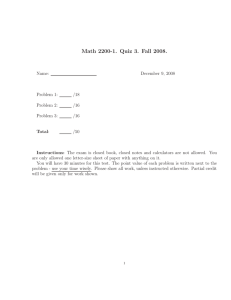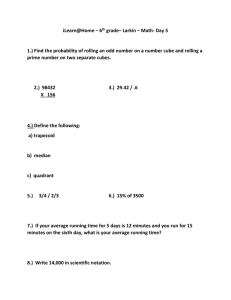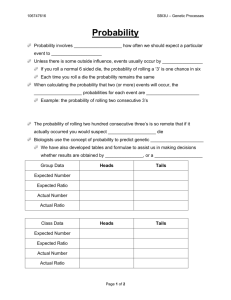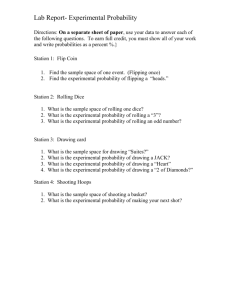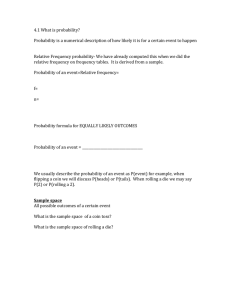CAMP Rolling Two Dice Day 6 Summer 2015
advertisement
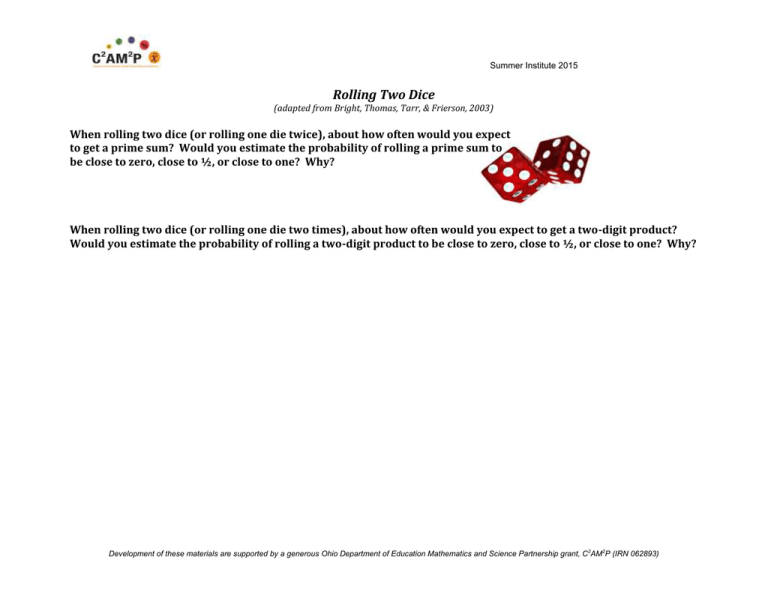
Summer Institute 2015 Rolling Two Dice (adapted from Bright, Thomas, Tarr, & Frierson, 2003) When rolling two dice (or rolling one die twice), about how often would you expect to get a prime sum? Would you estimate the probability of rolling a prime sum to be close to zero, close to ½, or close to one? Why? When rolling two dice (or rolling one die two times), about how often would you expect to get a two-digit product? Would you estimate the probability of rolling a two-digit product to be close to zero, close to ½, or close to one? Why? Development of these materials are supported by a generous Ohio Department of Education Mathematics and Science Partnership grant, C2AM2P (IRN 062893) Summer Institute 2015 Roll two dice 20 times and record the following information in the table below: whether or not the sum is prime, the ratio of “number of prime sums” to “cumulative number of rolls”, whether or not the product is a two-digit number, and the ratio of “number of two-digit products” to “cumulative number of rolls”. Then graph your data on the next page. Roll Prime sum? Prime sums : number of rolls 2-digit product? 2-digit products : number of rolls 1 2 3 4 5 6 7 8 9 10 11 12 13 14 15 16 17 18 19 20 Development of these materials are supported by a generous Ohio Department of Education Mathematics and Science Partnership grant, C2AM2P (IRN 062893) Summer Institute 2015 Development of these materials are supported by a generous Ohio Department of Education Mathematics and Science Partnership grant, C2AM2P (IRN 062893) Summer Institute 2015 Consider the following questions: What patterns do you see in the graphs? What do these patterns tell you? Based on the results of your simulation, estimate the probability of rolling a prime sum and the probability of rolling a two-digit product when rolling two dice. How did you make these estimates? With the others at your table, use an organized list, table, and/or tree diagram to find the probabilities of the events “rolling a prime sum” and “rolling a two-digit product”. How do these probabilities compare to the observed frequencies in the simulation? Development of these materials are supported by a generous Ohio Department of Education Mathematics and Science Partnership grant, C2AM2P (IRN 062893)
